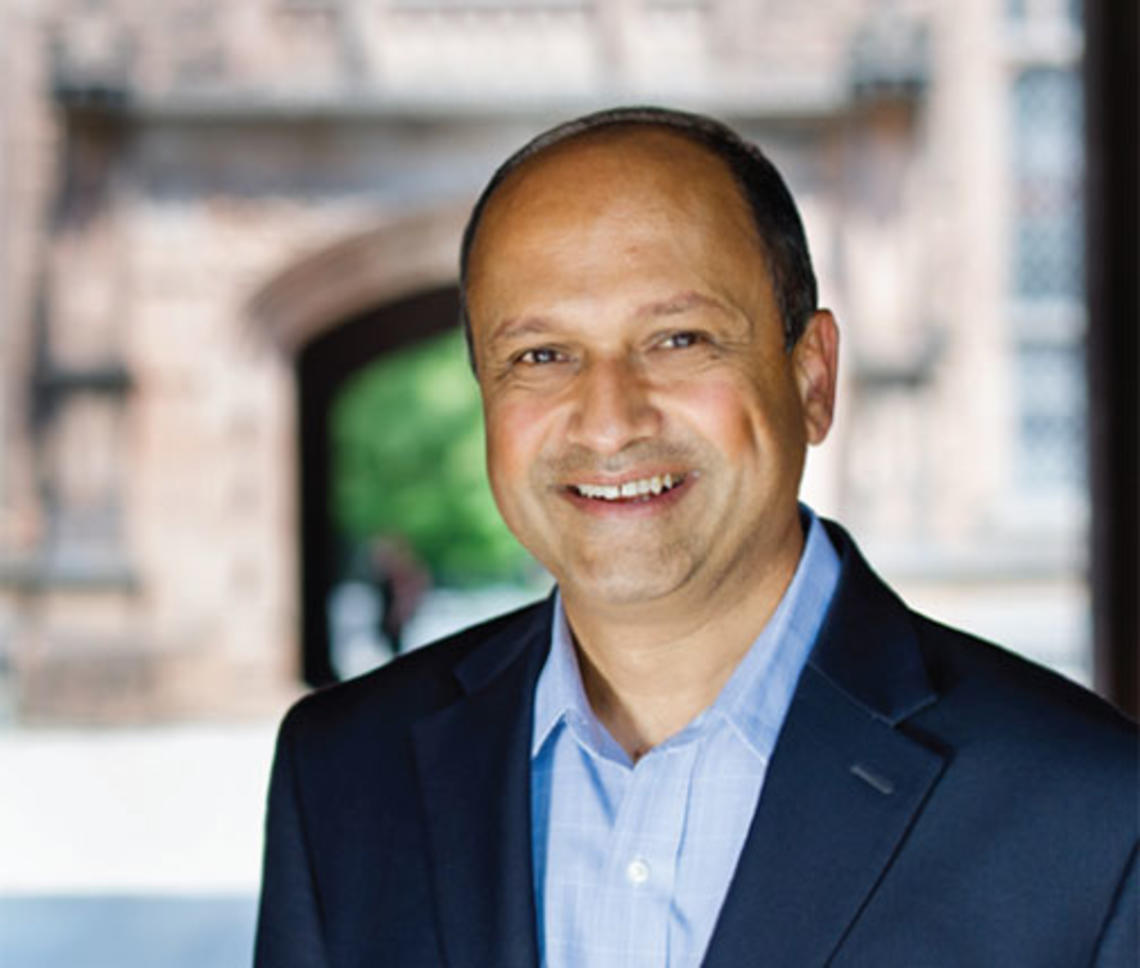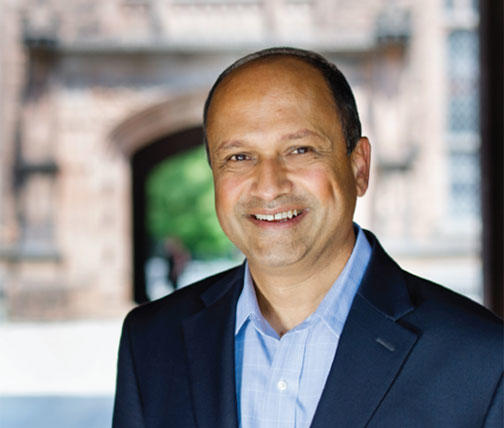
As graduate education is one of the key areas of exploration in our University-wide strategic planning process, I have invited Sanjeev Kulkarni — who assumed the deanship of the Graduate School one year ago — to offer his perspectives on the school’s importance and our efforts to plan for its future. — C.L.E.
Graduate education at Princeton has a long and storied history, and it is an integral component of our teaching and research mission. The Graduate School is vitally important to Princeton as the University seeks to educate leaders and pursue scholarship that will matter in the 21st century.
President Eisgruber has charged the Task Force on the Future of the Graduate School, which I chair, to identify strengths, weaknesses, challenges, and opportunities for the school, and to make recommendations to help guide its directions. As I am very passionate about graduate education and its impact on our University and our society, I am grateful for the efforts of the faculty, students, staff, and alumni who have provided and continue to provide valuable perspectives throughout our ongoing self-study and planning process.
To better understand the directions graduate education at Princeton may take, it is helpful to appreciate how it has evolved. James Madison famously became Princeton’s first graduate student in 1771, when he elected to stay on campus for postgraduate study in Hebrew. Graduate study was offered in a few disciplines by the late 19th century, leading to the formal establishment of the Graduate School in 1900. The emergence of a broad graduate program transformed Princeton from a college into a full-fledged university. This, along with the massive reshaping of undergraduate education under President Woodrow Wilson 1879 in the early 20th century, raised Princeton’s stature among the world’s finest scholarly institutions.
Today, Princeton’s Graduate School is distinctive in several ways. We have a tradition of excellence across all of our academic divisions — the humanities, social sciences, natural sciences, and engineering. Our 42 graduate degree-granting departments and programs emphasize doctoral education, with final master’s programs offered in select fields. Unlike many of our peer institutions, we do not have traditional professional schools — this helps us to maintain the relatively small size of our graduate student body (about 2,600) and foster an intimate sense of community.
Our size also enables us to pursue systematic growth in existing fields or new research areas, while maintaining a highly selective approach to graduate admissions. This allows us to enroll brilliant emerging scholars who become true partners with our faculty in creating new knowledge. Our graduate students are future leaders in academia and all fields, as evidenced by the wide-ranging influence our graduate alumni have had on the world — from public service to entrepreneurship, from the arts to science and engineering. The high quality of our graduate students, in turn, helps us attract distinguished faculty across the disciplines and maintain our strong international reputation. As Professor of Chemistry David MacMillan has said, “Graduate students are the fuel for the research engine.”
Graduate students have important relationships with undergraduates in our tight-knit academic and residential community. They serve as teachers and mentors in classrooms and laboratories, and some live among undergraduates in our residential colleges through the Resident Graduate Student program that launched in 2007. Graduate students often also form the bridge between undergraduate and faculty research.
For these and many other reasons, the vitality of our Graduate School is critical to the thriving future of our University. But a number of important questions are involved in charting the course for our Graduate School in its second century. Along with other research universities, we are grappling with the effects of diminished government research funding that provides significant support for graduate student work in the sciences and engineering. We must consider how to best use our resources to enhance our programs in traditional disciplines and ensure that we can seize opportunities to expand into new fields as needed. We need to think about how to best prepare graduate students for careers inside and outside the academy. And we also must continue to strengthen our campus community by improving our ability to attract and support talented students from underrepresented backgrounds, to enhance connections between graduate and undergraduate students, and to engage graduate alumni more deeply in the life of the University.
I have been fortunate to meet with hundreds of alumni over the past year on campus and around the country, and to hear their valuable perspectives on the importance of the Graduate School to Princeton’s mission. The sentiments shared clearly convey the tremendous impact that the Princeton graduate experience has had on so many lives. This has been very heartening, and our aim is to ensure that we provide an outstanding and distinctively Princeton experience to future generations of graduate students. I encourage all alumni—graduate or undergraduate—to visit the strategic planning website at www.princeton.edu/strategicplan and share your feedback on the work of our task force.
And for those of you who plan to attend Reunions in May, please stop by the Association of Princeton Graduate Alumni (APGA) tent for some fun and fellowship. Look for this year’s theme — “Woody Woo Wants You!” — in the Cuyler Courtyard. I hope to see you there!











0 Responses